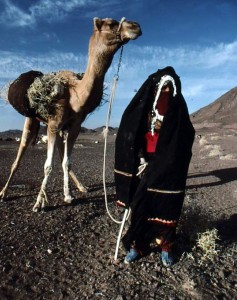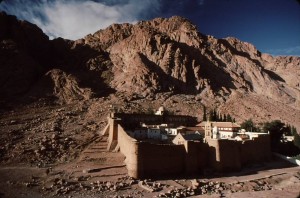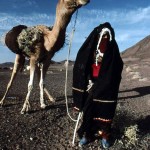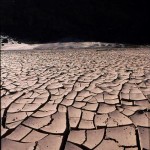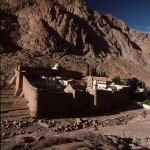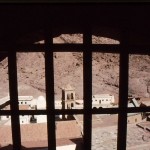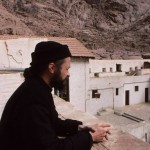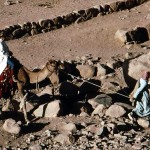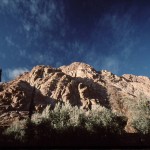Photo feature by Dave Bartruff
In the midst of the Sinai wilderness, God commanded Moses to lead the Children of Israel out of Egyptian bondage and into His Promised Land. God spoke from the fires of a burning bush saying, “Moses, where you now stand is holy ground.”
At the time, Moses himself was an exile and a fugitive of the pharaoh, a shepherd tending the flocks of his father-in-law. Forty years later, Moses would return to the same sacred site of his commissioning as the leader of the Hebrew Exodus, shepherding his people as they wandered in the Sinai wilderness and eventually into their Promised Land.
High above the sacred site of the Burning Bush is Mt. Sinai. Here, at its summit, Moses received the Ten Commandments written on stone tablets by the Hand of God.
The earliest Christians, too, gathered at the venerated location to observe holy days and commune together. Yearning to be closer to God and safe from Roman persecution, these ascetics chose the Sinai’s solitude and isolation to maintain their lives as lonely hermit cave dwellers.
To afford them permanent shelter and safety, in AD 330 a chapel and tower were erected on the Burning Bush site at the bidding of Helena, devout mother of Constantine the Great.
Throughout the ages, St. Catherine’s has survived many tribulations, thanks to an odd assortment of benefactors. During the Arab conquest, which began in AD 641, a mosque and minaret were added to the monastery to placate Muslim marauders.
The Crusaders occupied the monastery from AD 1099-1270, and during the Ottoman Era, the Turkish sultans recognized the monastery’s right to exist. During the French conquest of Egypt (17997-1804), Napoleon had repairs made from his own budget.
St. Catherine’s today is a living treasure house of historical and liturgical art. Its library is second only to the Vatican’s in its scope and value.
Visitors and pilgrims are welcomed five days a week each hoping to have, as did Moses, an extraordinary experience with God at the site of the Burning Bush.
- St. Catherine’s at foot of Mt. Sinai
- Bedouin shepherdess and camel mount
- Friendly Bedouin boy
- Elijah’s Plateau beneath Mt. Sinai summit
- Bi-lingual road sign
- Pilgrim nuns on Mt. Sinai trail
- Ancient fresco in monastery chapel
- Parched Sinai wilderness
- Aged resident monk
- St. Catherine’s at foot of Mt. Sinai
- View of courtyard
- Resident monk views courtyard
- Pilgrim arriving monastery by camel
- Sinai mountain peak

